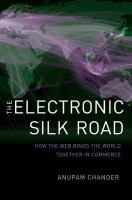It’s been over five years since Congress passed major legislation addressing copyright protection, but this hasn’t stopped copyright owners from achieving real progress in securing their expressive works. In cooperation with private-sector stakeholders, rights holders have made several deals aimed at combating copyright infringement and channeling consumer demand for original content toward legitimate outlets. These voluntary agreements will be the subject of a hearing this afternoon (9/18) before the House Judiciary Committee’s Subcommittee on Courts, Intellectual Property and the Internet. This panel marks the latest in a series of hearings the committee launched earlier this year to review the Copyright Act, much of which dates back to 1976 or earlier.
Copyright consensus may sound like an oxymoron, especially in the wake of last year’s bruising legislative battle over SOPA and PIPA. But in reality, there’s no shortage of common ground when it comes to copyright protection. Despite all the controversy that surrounds the issue, copyright isn’t so much a “conflict of visions”, to borrow from Thomas Sowell, but a conflict of tactics, as I argued earlier this year on Cato Unbound.
Indeed, with some notable exceptions, most scholars, business leaders, and policymakers accept that government has a legitimate and important role in securing to inventors and creators the fruits of their labors“. Unsurprisingly, the devil is in the details, where genuinely tough questions arise regarding the government’s proper role in policing the Internet for copyright violations. Should the law hold online intermediaries accountable for their users’ infringing acts? What remedies should the law afford rights holders whose works are unlawfully distributed all over the Internet, often by profit-generating foreign actors?
Continue reading →
No doubt I won’t be the only one to point out how funny it is that today’s New York Times front page exposé on the excesses of the Renewable Fuel Standard puts the blame on Wall Street firms trading in the market for ethanol credits. But I also want to make a comparison to intellectual property.
As the headline puts it, “Wall St. Exploits Ethanol Credits, and Prices Spike,” Yet ethanol credits are a thing that affect the price of gasoline only because the government created them out of thin air and mandated their use. Having created a new commodity–and a mandatory one for many refiners–it’s no surprise speculators entered the market. Yet this is how the NYT describes it:
The banks say they have far less influence in the market than others are suggesting, and are doing nothing wrong. But the activities, while legal, could have consequences for consumers.
See that? It’s the perfectly legal activities of the banks that will have consequences for consumers. I’d say it’s the entire program itself, created out of thin air by the government, that allows for these activities in the first place.
Because Congress and the EPA didn’t accurately predict future gasoline consumption (shocker that) they set the amount of ethanol that refiners must blend into gasoline too high. Refiners are on the hook to use more ethanol than possible, which forces them to buy ethanol credits instead. So of course commodity speculators are going to play in this made-up market, but it’s not the players we should be hating, it’s the game.
And for the record, I don’t mean to excuse the banks. I don’t know enough about this issue, but it wouldn’t surprise me if the banks had a hand in getting the government to create this market. If they did, then that’s par for the crony capitalist course.
Continue reading →
 I’m excited to be attending the big annual Privacy Identity Innovation (pii2013) conference next week in Seattle, Washington from September 16-18. Organized by the amazing Natalie Fonseca, who also created the widely attended Tech Policy Summit, the Privacy Identity Innovation conference brings together some of the best and brightest minds involved in the digital economy and information technology policy.
I’m excited to be attending the big annual Privacy Identity Innovation (pii2013) conference next week in Seattle, Washington from September 16-18. Organized by the amazing Natalie Fonseca, who also created the widely attended Tech Policy Summit, the Privacy Identity Innovation conference brings together some of the best and brightest minds involved in the digital economy and information technology policy.
Natalie and her team have put together another terrific agenda and group of all-star speakers to debate the “challenges associated with managing and securing the vast amounts of personal data being generated in our increasingly connected world” as well as the “huge opportunities for innovation if done properly.” There will be panels debating the implications of wearable technologies, Google Glass, government surveillance practices, digital advertising, transparency efforts, privacy by design, identification technologies and issues, and privacy developments in Europe and other countries, among other issues. The event also features workshops, demos, and other networking opportunities.
I’m looking forward to my panel on “Emerging Technologies and the Fine Line between Cool and Creepy.” That’s an issue I’ve had a lot to say about in blog posts here as well as recent law review articles. Occasional TLF contributor Larry Downes will also be on that panel with me.
Anyway, if you’ll be out there in Seattle for the big show, please make sure to find me and introduce yourself. I’ll be doing plenty of live-Tweeting from the event that you can read if you following me at (@AdamThierer) on Twitter.
Over on Forbes today, I have a very long post inspired by Monday’s oral arguments in Verizon’s challenge of the FCC’s Open Internet rules, passed in 2010
I say “inspired” because the post has nothing to say about the oral arguments which, in any case, I did not attend. Mainstream journalists can’t resist the temptation to try to read into the questions asked or the mood of the judges some indication of how the decision will come out
But as anyone who has ever worked in a court or followed appellate practice well knows, the tone of oral arguments signals nothing about a judge’s point-of-view. Often, the harshest questioning is reserved for the side a judge is leaning towards supporting, perhaps because the briefs filed were inadequate. Bad briefs create more work for the judge and her clerks.
I use the occasion of the hearing to take a fresh look at the net neutrality “debate,” which has been on-going since at least 2005, when I first started paying attention to it. In particular, I try to disentangle the political term “net neutrality” (undefined and, indeed, not even used in the 2010 Open Internet order) from the engineering principles of packet routing. Continue reading →
Thomas Rid, author of the new book Cyber War Will Not Take Place discusses whether so-called “cyber war” is a legitimate threat or not. Since the early 1990s, talk of cyber war has caused undue panic and worry and, despite major differences, the military treats the protection of cyberspace much in the same way as protection of land or sea. Rid also covers whether a cyber attack should be considered an act of war; whether it’s correct to classify a cyber attack as “war” considering no violence takes place; how sabotage, espionage and subversion come into play; and offers a positive way to view cyber attacks — have such attacks actually saved millions of lives?
Download
Related Links
Yesterday, Time Warner Cable and CBS reached a deal to end the weeks-long impasse that had resulted in CBS being blacked out in over 3 million U.S. households.
I predicted the two companies would resolve their differences before the start of the NFL season in a RealClearPolicy op-ed published last week:
From Los Angeles to New York, 3 million Americans in eight U.S. cities haven’t been able to watch CBS on cable for weeks, because of a business dispute between the network and Time Warner Cable (TWC). The two companies can’t agree on how much TWC should pay to carry CBS, so the network has blacked out TWC subscribers since August 1. With the NFL season kicking off on September 5, the timing couldn’t be worse for football fans.
Regulators at the Federal Communications Commission (FCC) face growing pressure to force the feuding companies to reach an agreement. But despite viewers’ frustrations with this standoff, government intervention isn’t the answer. If bureaucrats begin “overseeing” disputes between network owners and video providers, television viewers will face higher prices or lower-quality shows.
TWC and CBS are playing hardball over serious cash. CBS reportedly seeks to double its fee to $2 per subscriber each month, which TWC claims is an outrageous price increase. But CBS argues it costs more and more to develop hit new shows like Under the Dome, so it’s only fair viewers pay a bit more.
Both sides have a point. TWC is looking out for its millions of subscribers—and its bottom line—by keeping programming costs down. CBS, on the other hand, needs cash to develop creative new content, and hopes it can make some money doing so.
Continue reading →
Much of my recent research and writing has been focused on the contrast between “permissionless innovation” (the notion that innovation should generally be allowed by default) versus its antithesis, the “precautionary principle” (the idea that new innovations should be discouraged or even disallowed until their developers can prove that they won’t cause any harms). I have discussed this dichotomy in three recent law review articles, a couple of major agency filings, and several blog posts. Those essays are listed at the end of this post.
In this essay, I want to discuss a recent speech by Federal Trade Commission (FTC) Chairwoman Edith Ramirez and show how precautionary principle thinking is increasingly creeping into modern information technology policy discussions, prompted by the various privacy concerns surrounding “big data” and the “Internet of Things” among other information innovations and digital developments.
First, let me recap the core argument I make in my recent articles and filings. It can be summarized as follows: Continue reading →
A new article by Peter Caranicas and Rachel Abrams in Variety entitled, “Runaway Production: The United States of Tax Incentives,” notes how “[Motion picture] Producers looking for a location weigh many factors — screenplay, crew base, availability of stages, travel and lodging — but these days, first and foremost, they consider the local incentives and tax breaks that can reduce a production’s budget.” In other words, when every state and local government dreams of being “the next Hollywood,” they are willing to shower the entertainment industry with some pretty nice inducements at taxpayers expense.
But these programs are growing more controversial and some state and local governments are reconsidering the wisdom of these efforts. The article cites my Mercatus Center colleague Eileen Norcross, who points out the most serious problem with these programs:
Other arguments against incentives hold that they don’t help the states that offer them. In March, the Massachusetts revenue commission issued a scathing report on the state’s tax credit program, which stated that two-thirds of the total $175 million awarded in 2011 went to out-of-state spending. “The critique is that while they appear to bring in short-term temporary activity to a state or community, a lot of those benefits flow to the production companies,” says Eileen Norcross, a senior research fellow at George Mason U. “The people who are hired locally tend to be (in) more low-wage service industry jobs. It provides a temporary economic blip on the radar, and then it’s sort of fleeting.”
Eileen is exactly right. I have previously covered this issue here in an essay entitled, “State Film Industry Incentives: A Growing Cronyism Fiasco,” which was later expanded and included as a section in my 73-page forthcoming law review article with Brent Skorup, “A History of Cronyism and Capture in the Information Technology Sector.” Continue reading →
Last week, the Mercatus Center released “Bitcoin: A Primer for Policymakers” by yours truly and Andrea Castillo. In it we describe how the digital currency works and address many of the common misconceptions about it. We also analyze current laws and regulations that may already cover digital currencies and warn against preemptively placing regulatory restrictions on Bitcoin that could stifle the new technology before it has a chance to evolve. In addition, we give several recommendations about how to treat Bitcoin in future.
As I say in the video that accompanies the paper, Bitcoin is still very experimental and it might yet fail for any number of reasons. But, one of those reasons should not be that policymakers failed to understand it. Unfortunately, signs of misunderstanding abound, and that is why we wrote the primer.
Continue reading →
 As I’ve noted before, I didn’t start my professional life in the early 1990s as a tech policy wonk. My real passion 20 years ago was free trade policy. Unfortunately for me, as my boss rudely informed me at the time, the world was already brimming with aspiring trade analysts and probably didn’t need another. This was the time of NAFTA and WTO negotiations and seemingly everybody was lining up to get into the world of trade policy during that period.
As I’ve noted before, I didn’t start my professional life in the early 1990s as a tech policy wonk. My real passion 20 years ago was free trade policy. Unfortunately for me, as my boss rudely informed me at the time, the world was already brimming with aspiring trade analysts and probably didn’t need another. This was the time of NAFTA and WTO negotiations and seemingly everybody was lining up to get into the world of trade policy during that period.
And so, while I was finishing a master’s degree with trade theory applications and patiently hoping for opportunities to open up, I decided to take what I thought was going to be a brief detour into the strange new world of the Internet and information technology policy. Of course, I never looked backed. I was hooked on Net policy from Day 1. But I never stopped caring about trade theory and I have always remained passionate about the essential role that free trade plays in expanding commerce, improving human welfare, and facilitating more peaceful interactions among the diverse cultures and countries of this planet.
I only tell you this part of my own backstory so that you understand why I was so excited to receive a copy of Anupam Chander’s new book, The Electronic Silk Road: How the Web Binds the World Together in Commerce. Chander’s book weaves together trade theory and modern information technology policy issues. His over-arching goal is to sketch out and defend “a middle ground between isolation and unregulated trade, embracing free trade and also its regulation.” (p. 209) Continue reading →




 The Technology Liberation Front is the tech policy blog dedicated to keeping politicians' hands off the 'net and everything else related to technology.
The Technology Liberation Front is the tech policy blog dedicated to keeping politicians' hands off the 'net and everything else related to technology.